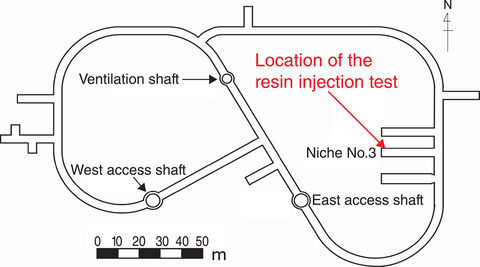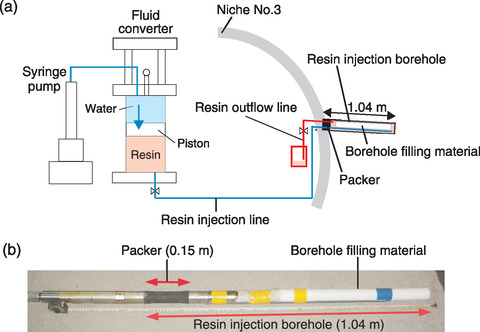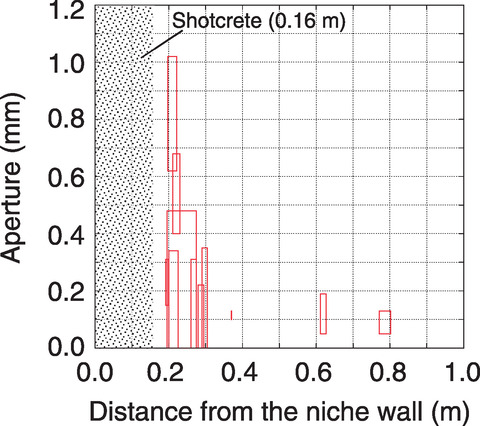
Fig.8-16 Location of the resin injection test

Fig.8-17 (a) Experimental setup for resin injection tests and (b) photograph of the packer system used in the resin injection borehole

Fig.8-18 Photographs of the injection borehole taken under (a) natural and (b) UV light

Fig.8-19 Relationship between the fracture aperture and distance from the niche wall
Artificial fractures can develop around the gallery wall of high-level radioactive waste (HLW) disposal repositories because of the resultant stress redistribution occurring during excavation. Zones containing these artificial fractures are identified as excavation-damaged zones (EDZs). The hydraulic conductivity in an EDZ can increase and cause the fracture to become a migration pathway for the radionuclides from the disposal facilities. Thus, the distribution and aperture of fractures in the EDZ must be understood quantitatively to assess the safety of HLW disposal.
Therefore, we performed an in situ resin injection experiment in the gallery of Niche No. 3 at a depth of 350 m in the Horonobe Underground Research Laboratory (URL) to observe EDZ fractures, as summarized in Fig.8-16. Previously, high-viscosity resins (i.e., with a viscosity 90-800 times that of water) were injected into the EDZ fractures. However, high-pressure injections cause the re-opening of existing fractures and/or the expanding of EDZ fractures. Therefore, we developed a low-viscosity resin (i.e., with a viscosity 7 times that of water) that can be polymerized at room temperature and in a water-rich condition. The resin included a fluorescent substance and was injected using the packer system shown in Fig.8-17. Based on a previous study on the EDZ, the EDZ around Niche No.3 was assumed to be within 0.6 m from the surface of the niche wall. Therefore, the length of the injection borehole was approximately 1.0 m, including the shotcrete thickness. After the resin polymerized, rock samples containing injected resin were overcored. The resin in the fractures was confirmed to be successfully polymerized by observation under ultraviolet (UV) light, as shown in Fig.8-18.
The aperture of the EDZ fractures was measured using a close-up photograph of the fracture that had been filled with resin taken under UV light. The relationship between the aperture and distance from the niche wall is shown in Fig.8-19. In the region within 0.3 m from the niche wall, fractures with large apertures were observed; the maximum aperture was approximately 1.02 mm. Many fractures developed in that region. On the other hand, there were very few fractures past 0.3 m from the niche wall, and the maximum aperture was 0.19 mm.
These results are expected to support model development to estimate the future change in the hydraulic conductivity of the EDZ fracture considering the increase in swelling pressure of the backfilling material after the repository is closed. Our study provided data fundamental to improving the reliability of HLW disposal safety assessments.
Our research was performed in collaboration with Kyoto University.
(Akitaka Sakurai)